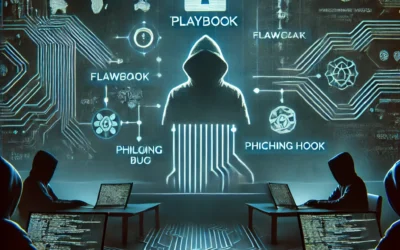Originally Posted In: Techradar
Fast food is adequate to address short-term hunger pains. It’s not necessarily good for you; you should not constantly consume it, but it fills the void. However, it will cause you more harm than good in the long run. Out-of-the-box cybersecurity offerings that come free with software platforms are similar to fast food; it’s a quick fix for a minor or isolated issue but not good for the IT landscape’s overall health.
Free cybersecurity software promotes a false sense of adequate protection. This erroneous notion of sufficient network defense can have devastating consequences, as out-of-the-box cybersecurity tools do not facilitate efficient monitoring. Proper protection from cyber threats necessitates better fortifying all potential attack vectors. What is the antidote to this recipe for failure? The answer is to develop a thoughtful IT security strategy process that includes constant collaboration and conversation with an attitude of continuous improvement.
Cybersecurity is a journey–not a destination
A journey towards adequate security requires the collaboration of all stakeholders, including IT personnel, security teams, audit professionals, and compliance experts, to identify control weaknesses. Uncovering control weaknesses often reveals undocumented and disorganized aspects within the organization. Once the deficiencies are identified, new responsibilities, processes, and policies can be established to promote a more secure environment.
In addition, a successful security journey begins by establishing a well-defined baseline. The baseline outlines the optimal state for secure operations and configurations. It resembles a pyramid with a broad base synthesizing external and internal requirements and insights from third-party recommendations. The pyramid’s core is an organization’s culture, values, and unique problem-solving approaches. The concept level is at the inverted pyramid’s apex, encompassing access control, data security, and application security. These concepts form the foundation for the security baseline. It’s important to note that constant communication is required to ensure success once the baseline path has been established.
Hackers thrive on dysfunction; keep conversations going
As outlined above, the success of a security strategy is based on a broad awareness of the overall need for improving security—rather than individual approaches that serve only the needs of particular departments. Constant discussions with all stakeholders must be initiated to ensure the longevity of proper cybersecurity protection.
IT security is generally a multi-dimensional, comprehensive undertaking with many ways to solve problems. Regular conversations about an IT security strategy allow the various stakeholders to share their specific knowledge and experience to gain a common understanding and promote the longevity of a successful plan. In addition, ongoing conversations bring stakeholders onto the same page, enabling them to align all activities to protect the entire organization—rather than revert to a siloed, departmental mentality.
Departmental budget owners and IT security experts are the primary individuals who should be involved in any cybersecurity conversation. The unified voices of these individuals are critical as many C-Suite members are often overconfident that their IT landscapes are not on any hacker’s radar. In many cases, inadequate funding often causes IT security administrators to be the sole proprietors advocating for hardening the network. But a unified representation of all departments lobbying for more robust protection often persuades the register to ring in their favor.
A one-day workshop should be held at a neutral location to understand all stakeholder cybersecurity concerns. The meeting will allow stakeholders to brainstorm the best measures to address the entire company’s security needs, which is a crucial step for solving complex cybersecurity problems. Upon conclusion of the initial workshop, follow-up conversations should occur quarterly, allowing stakeholders to review progress and adapt to new situations. The workshop and ongoing conversations need to:
- Create transparency surrounding business-critical data, applications, and systems.
- Identify the usage and external exposure of business-critical data.
- Define appropriate data security measures and a strategic execution plan.
- Establish best practices for network, system, and application hardening/protection.
- Align all stakeholders with a clear cybersecurity roadmap appropriate for today’s needs yet nimble enough to pivot toward tomorrow’s issues.
- Ensure enough budget to effectively reduce attack vectors, train employees, and continually validate procedures.
Conclusion
The journey toward adequate cybersecurity is a collaborative effort involving various organizational stakeholders. Organizations can identify and address control weaknesses by bringing IT personnel, security teams, audit professionals, and compliance experts together to discuss methods to establish a more secure environment.
Ongoing discussions with all stakeholders are needed to share their knowledge and experiences, fostering a common understanding and alignment of activities to protect the entire organization. Leveraging a mutual consensus will also help to release funds needed to support the appropriate cybersecurity efforts to protect business-critical information.
Most importantly, IT professionals must avoid using out-of-the-box cybersecurity software. Rudimentary protection is not a defense against well-funded hackers with superior knowledge to easily circumvent free cybersecurity software. Ensuring adequate protection is not a nice prize at the bottom of a box; it is a comprehensive process involving many technologies, strategies, and tools. Cybersecurity is never a one-size-fits-all solution that can be quickly consumed like fast food, and those who rely on out-of-the-box security methods will inevitably experience heartburn.
This article was produced as part of TechRadarPro’s Expert Insights channel where we feature the best and brightest minds in the technology industry today. The views expressed here are those of the author and are not necessarily those of TechRadarPro or Future plc. If you are interested in contributing find out more here: https://www.techradar.com/news/submit-your-story-to-techradar-pro




0 Comments